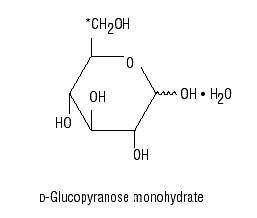Plasma-Lyte 56 and Dextrose
Generic name: dextrose monohydrate, sodium chloride, potassium acetate, magnesium acetate tetrahydrate
Dosage form: injection, solution
Drug class:Intravenous nutritional products
Medically reviewed by Drugs.com. Last updated on Jan 24, 2022.
On This Page
Plasma-Lyte 56 and Dextrose Description
PLASMA-LYTE 56 and 5% Dextrose Injection (Multiple Electrolytes and Dextrose Injection, Type 1, USP) is a sterile, nonpyrogenic solution for fluid and electrolyte replenishment and caloric supply in a single dose container for intravenous administration. Each 100 mL contains 5 g Dextrose Hydrous, USP, 234 mg Sodium Chloride, USP (NaCl); 128 mg Potassium Acetate, USP (C2H3KO2); and 32 mg Magnesium Acetate, Tetrahydrate (C4H6MgO4•4H2O). It contains no antimicrobial agents. pH 5.0 (4.0 to 6.5). The pH is adjusted with hydrochloric acid.
PLASMA-LYTE 56 and 5% Dextrose Injection (Multiple Electrolytes and Dextrose Injection, Type 1, USP) administered intravenously has value as a source of water, electrolytes, and calories. One liter has an ionic concentration of 40 mEq sodium, 13 mEq potassium, 3 mEq magnesium, 40 mEq chloride, and 16 mEq acetate. The osmolarity is 363 mOsmol/L (calc). Normal physiologic osmolarity range is approximately 280 to 310 mOsmol/L. The caloric content is 170 kcal/L.
The VIAFLEX plastic container is fabricated from a specially formulated polyvinyl chloride (PL 146 Plastic). The amount of water that can permeate from inside the container into the overwrap is insufficient to affect the solution significantly. Solutions in contact with the plastic container may leach out certain chemical components from the plastic in very small amounts; however, biological testing was supportive of the safety of the plastic container materials.
Plasma-Lyte 56 and Dextrose - Clinical Pharmacology
PLASMA-LYTE 56 and 5% Dextrose Injection (Multiple Electrolytes and Dextrose Injection, Type 1, USP) has value as a source of water, electrolytes, and calories. It is capable of inducing diuresis depending on the clinical condition of the patient.




